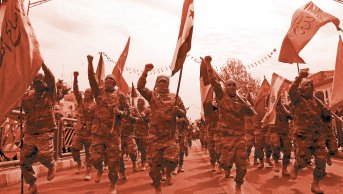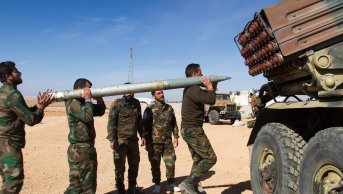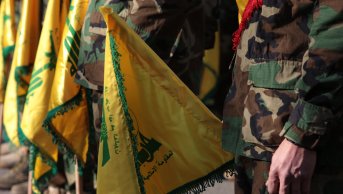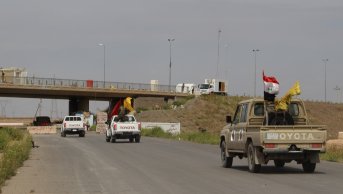Charlie Hebdo Attack: An Outcome of ISIS-AQ Rivalry?

On January 7, twelve people including a police officer were killed in a shooting in Charlie Hebdo’s office, in Paris. The attack was committed by two French citizens of Algerian origin (Said Kouachi and Chérif Kouachi) and targeted Charlie Hebdo magazine, which is known for its Islamophobic cartoons. The bloody attack that took place in the French capital raised questions on the most recent hot topic of European agenda: Foreign fighters in the Middle East. That is because, according to the Yemeni officals, Kouachi brothers were in Yemen in 2011 and they had weapons training in Marib desert. After the attack, AQAP’s (al Qaeda in Arabian Peninsula) first video message was a tribute that praised the attack. Moreover in their second video they officially claimed responsibility for the Charlie Hebdo attacks. AQAP’s terrorist attacks, which took place in the heart of a European capital and was committed by French citizens, alarmed Western governments. The most important question was, “What if European foreign fighters in the Middle East (especially in Syria and Iraq) return to their homelands and become a threat to homeland security?” According to ICSR’s recent (January 2015) estimations, there are approximately 1200 French foreign fighters in Syria and Iraq and also most of them are fighting for ISIS. Compared to the British fighters in Syria/Iraq (between 500-600 British citizens) this is a worrying figure for the French officials. While many studies on European foreign fighters show that most of these fighters do not want to return to their country or commit an attack inside their country, the Charlie Hebdo attacks have proved otherwise.
Who?
While everyone was asking “who did this attack?” AQAP and IS released video messages that praised the operation.. In both groups' messages we can see praises for the Charlie Hebdo attack while no signs of any official claim. But a week after the shooting, the answer for the question “who” came from AQAP. Nasser al-Ansi, a top figure in AQAP leadership, claimed in a video message that “one who chose the target, laid the plan and financed the operation is the leadership of the organization (AQAP)”.
In comparison with other AQ (al Qaeda) branches, AQAP is the most capable group that can carry out an attack inside Europe. For example, AQIM (al Qaeda in the Islamic Maghreb) has a limited manpower and material capacity. In contrast, al-Shabaab (al Qaeda branch in Somalia) has potential to carry out cross-border attacks in neighboring countries but is far from being a center for foreign fighters flow.
Jabhat al-Nusra (al-Qaeda in Bilad al-Sham/Syria) is believed to have more manpower than AQIM and Shabaab. The group has also attracted many foreign fighters for its ranks to fight against Assad and the ISIS. But they have different priorities when it comes to action. First of all, they are in the middle of a very bloody civil war inside Syria. While fighting against Assad and the ISIS on many fronts, Jabhat al-Nusra (JaN) is also trying to gain more land and authority in rural Idlib. It is not plausible that an attack on the French soil is a priority for JaN while they’re very busy with Syrian war. Moreover, statements coming from the JaN leadership include no signals of an attack inside Europe. Both Abu Firas as-Suri (the spokeperson of JaN) and Abu Muhammad al-Jawlani (the leader of JaN) describe the main goal of the group as overthrowing Assad.
When we focus on AQAP first, we see that they’re gaining from the chaos in Yemen. But they also have a good reputation inside militant Salafi networks from the time of Anwar al-Awlaki. Awlaki was a prominent pro-AQ ideologue, before he was killed by a US drone strike. Awlaki, who was focused on propaganda, contributed to an online militant Salafi magazine in English. “Inspire” magazine is an active propaganda tool for Salafi networks – especially whole pro-AQ network- as it includes stuff such as “bomb-making guide” and calls for new recruitments to militant Salafi fronts. Although there was no official link between AQAP and “Inspire” magazine, the presence of Awlaki and the impact of propaganda in English brought AQAP’s image on top among potential Western based militants. We’d also see the early signals of a possible Charlie Hebdo attack in Inspire. Charlie Hebdo’s late editor Stephane Charbonnier was portrayed on a “wanted dead or alive” list in Inspire’s March 2013 issue.
Why?
In order to find an answer to the question “why”, we should look at the progress and evolution of the Islamic State and its impact on militant Salafi movements. The Islamic State of Iraq (ISI) – early structure of the ISIS - expanded its activities inside Syria, announced that the JaN was a part of their organization and they were merged under the name of the Islamic State in Iraq and al-Sham (ISIS). This sharp move without permission of the AQ Centre and the JaN leadership created a breaking moment on the global militant movements' history. Jawlani’s and Zawahiri’s rejection of the declaration of ISIS was the beginning of a cold war between AQ and ISIS. In less than one year, this cold war turned into a bloody war between JaN (al Qaeda branch in Syria) and ISIS. After that the AQ leadership publicly disavowed any links with the ISIS. This war between al-Qaeda and ISI-ISIS -and today IS- is now a total propaganda war to become an attraction center for foreign fighters.
Today, the videos released by the ISIS about their rule on captured territories, military actions in battlefield or mass executions are all released as quality productions with HD shootings and multi-language subtitles. Recent research on foreign fighters shows that more than half of the foreign fighters in Iraq and Syria have joined the ISIS. While traditional concepts like “Caliphate” and an “Islamic state” have influence on young militant wannabes, modern propaganda tools such as these videos and images have also a very important function in recruiting new fighters. The ISIS’s increasing propaganda power signals a propaganda war era to get ahead in race to be the leading organization for foreign fighters. Moreover, this war includes not only social media propaganda but also military attacks that can advertise these groups, such as the Charlie Hebdo attacks.
Recently the propaganda war between the two camps is heated by messages from both sides. For example, against the AQAP videos, which contains strong criticisms against the ISIS's declaration of caliphate, ISIS responded with harsh words on AQAP leadership in their online magazine Dabiq. ISIS uses violence as a propaganda tool, also against its rivals in the miitant Salafi camp. When Jabhat al-Nusra accused ISIS of killing and torturing other “mujahideen” and called them “Khawarij”, ISIS responded by releasing videos of JaN members, who were being tortured and humiliated by ISIS fighters. Aaron Zelin, an expert on global militant Salafism and armed groups, describes these developments as a race to get the leadership of global jihad.
In conclusion, the ISIS’s harsh words on AQ leader Zawahiri and Taliban leader Mullah Omar in Dabiq magazine and their search for expansion in Libya, Yemen and Egypt –where AQ has presence- shows us how tough the rivalry between AQ and ISIS is. The capture of Mosul and the declaration of caliphate put ISIS in the lead in the race of global jihad. In this context AQAP’s claim of the Charlie Hebdo attacks should also be considered a counter move by AQAP in their rivalry with AQ on foreign fighters issue.











